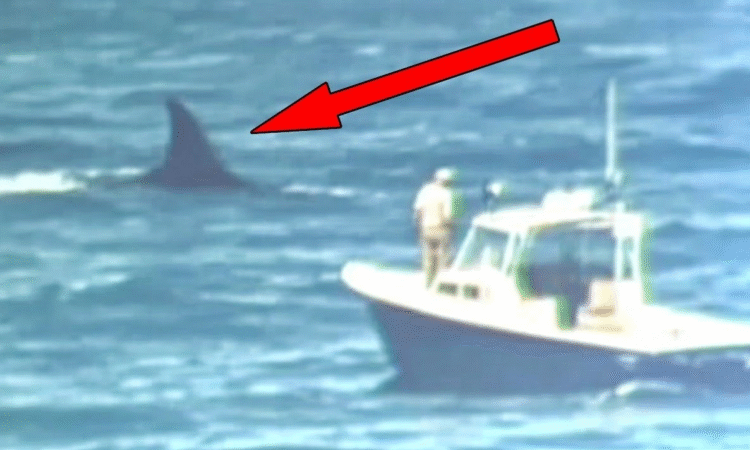
In late 2003, scientists in Western Australia set out on what they thought would be a routine research project. Dr. Sarah Mitchell and her team were tagging great white sharks to study how they live, hunt, and move through the ocean. The goal was simple: attach a tracking device, let the shark roam for a few months, and then collect the data once the tag detached and floated to the surface.
The shark they named Alpha was a strong and healthy 9-foot female. She looked every bit the perfect predator. A sophisticated tag was placed on her dorsal fin. This device could record her depth, movements, the water temperature, and even her exact location. For weeks, Alpha behaved normally. She swam along the southern coast, hunted as expected, and followed the same natural patterns her species had followed for millions of years.
But in March 2004, something happened that shocked the scientific community. When Alpha’s tracking tag washed up on a beach, the scientists rushed to recover it. Instead of finding normal shark behavior data, they discovered something terrifying: Alpha had vanished. The numbers showed she had been eaten alive.
The data revealed that Alpha’s tag recorded a sudden jump in temperature, from 46°F to 78°F in just seconds. The only way this could happen was if the tag had been swallowed by a warm-blooded animal. Moments later, the tag plunged nearly 1,900 feet into the deep sea. This wasn’t the random sinking of a dead animal. The movements were controlled and deliberate, suggesting Alpha had been taken by something powerful.
For days, the tag continued to move through the ocean, as if inside the belly of a predator. To the scientists, this was more than strange—it was frightening.
Speculation spread quickly. Was it a giant squid? A huge unknown whale? Or even something more mysterious, like a surviving megalodon—the prehistoric shark thought to be extinct for millions of years? Online forums exploded with theories, and the public imagination ran wild.
Marine biologists, however, took a more careful approach. Dr. James Harrison, a shark expert, explained a dark truth: sharks are cannibals. Many shark species eat each other, even before birth. Great whites themselves have been known to hunt smaller sharks. The possibility that Alpha was eaten by an even bigger great white soon became the leading theory.
The data supported this idea. Great white sharks are partially warm-blooded, which would explain the 78°F reading. They are also known to dive thousands of feet, matching the 1,900-foot plunge recorded by Alpha’s tag. To eat a 9-foot shark whole, the predator would have to be 16 to 20 feet long—a massive great white.
The team began calling this mystery predator “The Submarine.” Fishermen had long told stories of huge shadowy sharks in Australian waters, and now the evidence seemed to support them.
Other theories also emerged. Some scientists pointed to orcas, or killer whales, known for their intelligence and brutal hunting skills. Orcas in South Africa had been observed killing great whites and eating their livers with surgical precision. But in Alpha’s case, the details didn’t match. Orcas are warmer than the tag recorded, they don’t swallow sharks whole, and they usually hunt in shallow waters—not deep dives of nearly 2,000 feet.
With each theory tested and dismissed, the cannibal shark explanation grew stronger.
The story gained global attention. Documentaries were made, and news outlets around the world covered the “Hunt for the Super Predator.” Scientists returned to the waters off Australia with advanced sonar and cameras, hoping to find the mysterious shark. They never caught the Submarine on film, but they found signs: whale carcasses with huge bite marks, unusual sonar readings, and other tagged sharks that had disappeared under similar circumstances.
To this day, Alpha’s killer has never been officially identified. But the event changed the way scientists study sharks. It proved that even apex predators like great whites may not be at the top of the food chain. Somewhere in the deep ocean, something larger, faster, and hungrier might be lurking.
Dr. Mitchell, who still leads shark research projects, summed it up best:
“Alpha taught us that the ocean still has the power to surprise us. For all our knowledge and technology, we must remember—the sea is still full of secrets.”
The legend of the Submarine remains. Some believe it’s just a massive great white. Others think it could be a species we haven’t discovered yet. And some still whisper about the return of the megalodon.
One thing is certain: the ocean is vast, unexplored, and dangerous. And as Alpha’s story shows, even the most feared predator can become prey.




